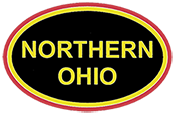Picture: Cleveland’s Broadway & Newburgh Street Ry #51, Columbus Metropolitan Library.
Primitive as Victorian era trolleys may seem to us today, in their time they were the product of cutting edge technology. Consider what was being accomplished. The earliest understanding of electricity as a moving current was only about a century old, and it was only for a little more than half that time that it was recognized as being capable of producing mechanical movement. Harnessing that movement for practical uses was just beginning.
To a degree, trolleys got a head start in that the horse and cable railways had developed such things as scheduled operation and fare boxes and registers . Also, the public had come to accept and depend on horse , cable and steam rail lines for transportation. For a few years, during the early and mid ’80’s, as inventors groped to create electric cars that not only worked but were reliable, progress was slow. But their attempts introduced the public to the idea of electrically powered transit. So, when reliable electric cars came in, they came in with a storm. The first really reliable line opened in 1888. By 1890 there were more than 200 electric railways operating or under construction in the United States and Canada.
Stevens, J.R. (Ed). “Pioneers of Electric Railroading: Their Story In Words and Pictures.” New York: Electric Railroaders Assn. 1991.

